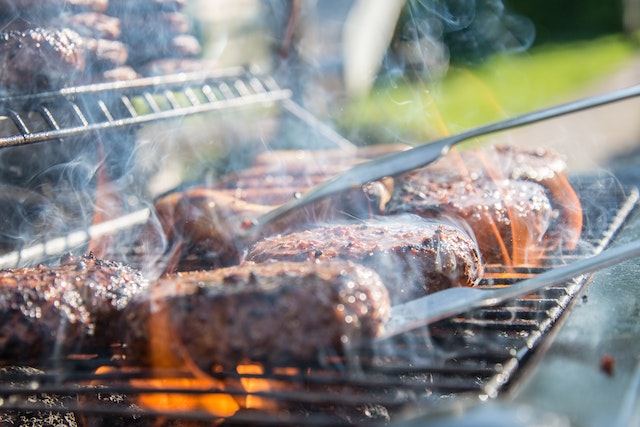
Imagine the summer season is upon us, which means it’s time to dust off that grill, gather some friends and family, and start cooking up a storm. Grilling is a fantastic way to add flavor and depth to any dish. However, it can be an intimidating cooking method for beginners. Fear not, for with a few key techniques and some practice, you’ll be a grilling pro in no time.
Grill Preparation
A well-prepared grill is crucial to achieving the perfect grilled meal. Follow these tips to ensure your grill is ready for cooking:
Clean the Grill
It’s important to start with a clean grill. Use a stiff wire brush to clean the grates before and after each use. This not only helps prevent food from sticking but also ensures your food won’t pick up any unwanted flavors from previous meals.
Check the Propane Tank
If you’re using a gas grill, make sure the propane tank is full and ready to go. Test the gas connections and make sure there are no leaks.
If you’re using a charcoal grill, add enough charcoal to fill the bottom of the grill. Light the coals at least 30 minutes before cooking to ensure they are hot and ready.
Choose the Right Tools
Make sure you have all the necessary grilling tools on hand, including tongs, a spatula, a grill brush, and oven mitts. These will make grilling easier and safer.
Select Your Meats and Prep Them
When selecting meats for grilling, choose cuts appropriate for grilling, such as steak, chicken, burgers, or pork chops. Thicker cuts of meats work best on the grill, so keep that in mind when making your selection.
Use marinades or rubs to add flavor to your meats. For marinades, plan ahead and soak the meat overnight. For rubs, apply to the meat earlier in the day or just before grilling.
Prepare the grill for the desired level of heat. Preheat to medium-high or high, depending on the recipe.
Once you’ve prepared your grill, you’re ready to start grilling.
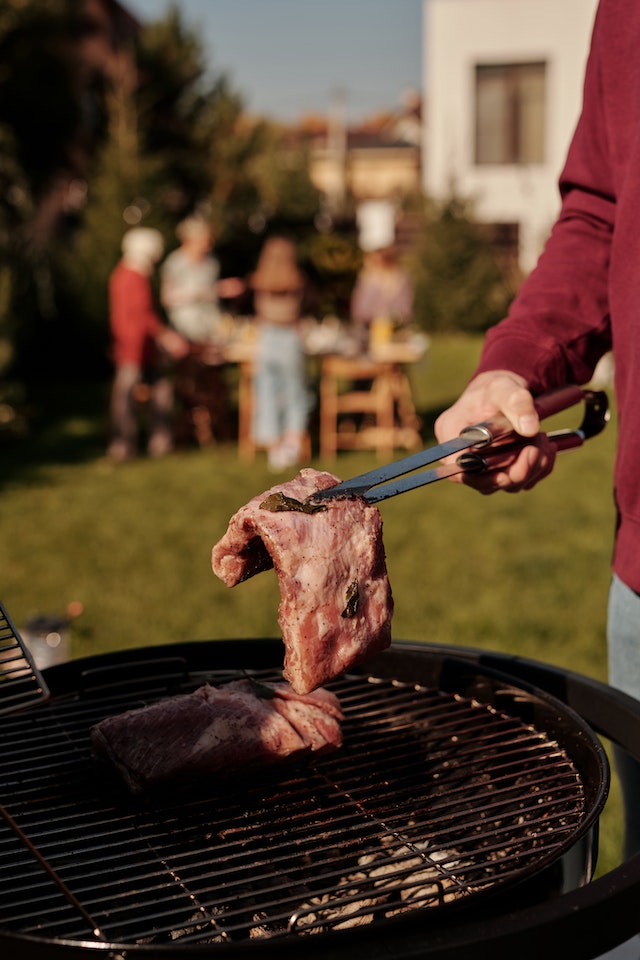
Choosing Your Meats: A Guide to Grilling Success
One of the best parts of grilling is the endless possibilities when it comes to meat selection. However, not all meats are created equal when it comes to grilling. For a successful grill session, it’s important to choose the right meat that will produce juicy and flavorful results. Here’s a guide to help you choose the best meats for grilling:
Steak
Steak lovers rejoice! Grilling a steak is one of the best ways to enjoy this flavorful cut of beef. Choose a thicker cut like a rib-eye or sirloin for a successful grill experience. For extra flavor, try marinating your steak in a mixture of olive oil, garlic, and fresh herbs.
Chicken
Chicken is a lean and healthy choice for the grill. Chicken legs, thighs, and breasts are all great options for grilling. To prevent dryness, marinate the chicken beforehand or apply a rub. When cooking, use the indirect cooking method to ensure the chicken is cooked all the way through.
Pork
Grilling pork chops or tenderloins is a delicious and easy way to prepare this meat. Opt for thicker cuts to prevent overcooking. A simple rub of salt, pepper, and paprika can add big flavor to your pork.
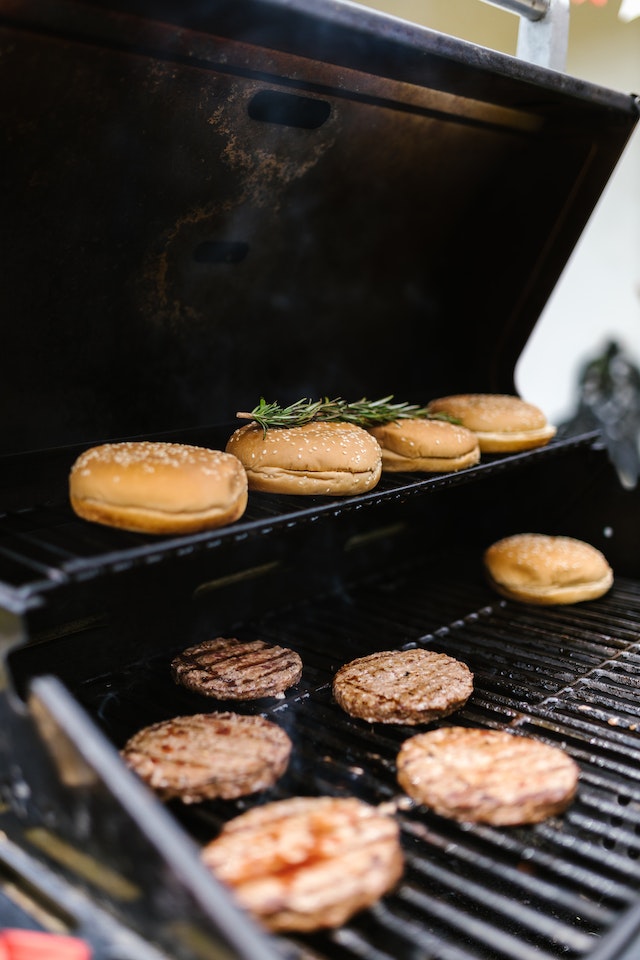
Burgers
Burgers are a classic choice for the grill. When selecting ground beef, choose a meat-to-fat ratio that will create a juicy patty. An 80/20 blend is a good rule of thumb. When shaping your patties, make them slightly larger than the bun, as the burger will shrink while cooking
Remember, the key to success is preparation and patience. With the right meat and seasonings, along with a properly prepared grill, you’ll be on your way to grilling greatness in no time.
Marinades and Rubs
One of the best ways to add extra flavor to your grilled meats is by using marinades and rubs. Both methods involve soaking the meat with various spices, herbs, and liquids before grilling, but they provide different benefits.
Marinades: Soaking Your Meats in Flavor
Marinades are often liquid-based and involve soaking the meat for several hours or overnight. The acidic ingredients in a marinade, such as vinegar or citrus juice, can help break down tough fibers in the meat, resulting in a more tender and flavorful end product. Marinades can also help add moisture to lean meats which tend to dry out on the grill.
When preparing a marinade, it’s important to choose ingredients that complement the meat you’re grilling. For example, a citrus-based marinade with lime juice, cilantro, and garlic is great for chicken and fish, while a red wine-based marinade with rosemary and garlic is perfect for beef. Here are some tips to keep in mind when using marinades:
- Use a non-reactive container, such as a glass dish or plastic bag, to marinate the meat. The acidic ingredients can react with metal, altering the flavor.
- Don’t marinate for too long, as the meat can become too tender and mushy. A few hours to overnight is usually sufficient.
- Always discard the marinade and don’t reuse it. The marinade will be contaminated with bacteria from the raw meat and could make you sick.
Rubs: Adding Flavor with Dry Mixtures
Unlike marinades, rubs are a dry mixture of spices and herbs that are applied directly to the surface of the meat before grilling. The spices in a rub help form a crust on the meat as it cooks, adding flavor and texture. Rubs also offer more control over the amount of seasoning used and can be adjusted to personal preference.
When making a rub, start with a base of salt and sugar, and then add spices and herbs to create the desired flavor profile. For example, a simple rub for pork chops could include kosher salt, brown sugar, smoked paprika, garlic powder, and black pepper.
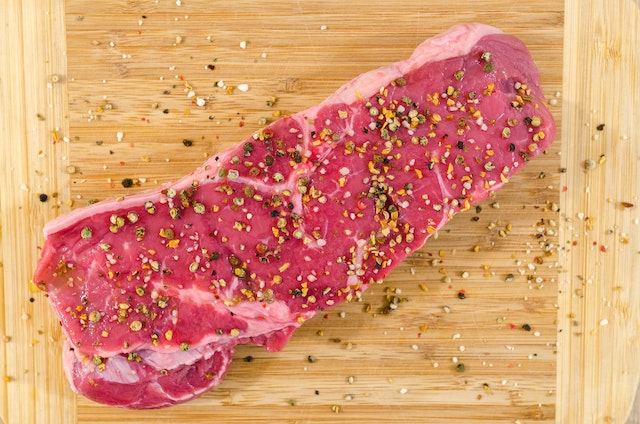
Here are some tips to keep in mind when using rubs:
- Apply the rub evenly on all sides of the meat, pressing it into the surface.
- Allow the meat to sit with the rub for at least 30 minutes before grilling, allowing the flavors to meld and penetrate the meat.
- If using a rub with sugar, watch for burning as the sugar can caramelize and char easily on the grill.
Whether you prefer a marinade or a rub, both methods add depth and complexity of flavor to your grilled meats. Experiment with different ingredients and combinations to find your perfect seasoning blend.
All About the Heat
Grilling is all about the heat. Whether you’re searing steaks, barbecuing chicken, or cooking up burgers, getting the temperature right is crucial to achieving the perfect grilled meal. Here are some tips for choosing the right heat for your grilling needs.
High Heat
High heat is ideal for quick-cooking foods like burgers, steak, and vegetables. It is also great for achieving a caramelized crust on the outside of your meat while keeping the inside tender and juicy.
To achieve high heat, preheat your grill to its highest setting and let it heat up for at least 10 minutes before cooking. You can also use the direct heat method by placing your food directly over the flames.
A few things to keep in mind when using high heat:
- Monitor your food closely to prevent burning or overcooking.
- Consider using a timer to ensure your food is cooked to perfection.
- Make sure to have all your ingredients and utensils ready before you start cooking.
Medium Heat
Medium heat is ideal for cooking thicker foods like pork chops or chicken breasts. It allows the meat to cook through without burning on the outside.
To achieve medium heat, preheat your grill to a medium-high setting and let it heat up for at least 10 minutes before cooking. You can also use the indirect heat method by placing your food to the side of the grill rather than directly over the flames.
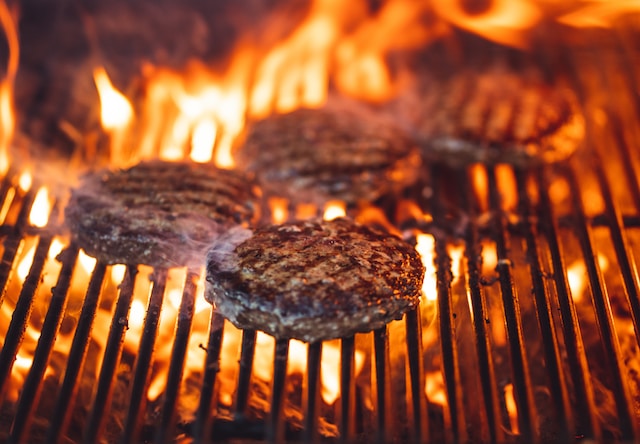
A few things to keep in mind when using medium heat:
- Use a meat thermometer to ensure your meat is cooked to a safe internal temperature.
- Keep the lid closed as much as possible to maintain a consistent temperature.
- Consider marinating your meat beforehand to add flavor and juiciness.
Low Heat
Low heat is ideal for slow-cooking foods like ribs or brisket. It allows the meat to cook through slowly, resulting in tender and flavorful meat.
To achieve low heat, preheat your grill to a low-medium setting and let it heat up for at least 10 minutes before cooking. You can also use the indirect heat method by placing your food to the side of the grill, away from the flames.
A few things to keep in mind when using low heat:
- Be patient! Slow-cooking takes time, but the end result is worth it.
- Use a meat thermometer to ensure your meat is cooked to a safe internal temperature.
- Consider using a drip pan to catch any juices and prevent flare-ups.
Patience is Key
When it comes to grilling, patience is the key to achieving a perfectly cooked meal. Rushing the process can lead to overcooked or undercooked meat, resulting in dry or tough meat. To ensure that your food is cooked to perfection, follow these tips:
1. Preheat your grill: A proper preheat is essential in allowing the heat to be evenly distributed throughout the grill. Let your grill preheat for at least 10 minutes before placing any food on the grates.
2. Don’t overcrowd the grill: Overcrowding the grill can cause a lack of heat circulation, leading to uneven cooking. Leave enough space between the food items to ensure even cooking.

3. Use a meat thermometer: Using a meat thermometer is the best way to ensure that your meat is cooked to the desired level of doneness. Insert the thermometer into the thickest part of the meat for an accurate reading.
4. Let the meat rest: Once your meat is cooked to perfection, it is essential to let it rest for a few minutes. This allows the juices to redistribute throughout the meat, resulting in a more flavorful end product.
Choosing the Right Fuel
Choosing the right fuel is an important factor in achieving a successful grilling session. Here are some options to consider:
Charcoal: Charcoal is an excellent option for achieving a smoky flavor in your food. It also allows for better temperature control and can be used for both direct and indirect cooking.
Gas: Gas grills are a popular choice for their convenience and ease of use. They are quick to start and offer precise temperature control.
Wood: Wood is a great option for achieving a unique flavor in your grilled food. Different woods offer different flavors, such as hickory for a smoky flavor, or applewood for a sweet, fruity flavor.
Pellets: Pellet grills use hardwood pellets as fuel, allowing for precise temperature control and a unique, smoky flavor in your food.
Grilling is a fun and exciting way to add flavor to your meals. By following these tips, you can become a grilling pro in no time. Remember, patience is key, and choosing the right fuel is crucial in achieving a successful grilling session. So go ahead, fire up that grill, and enjoy the delicious tastes of summer.
